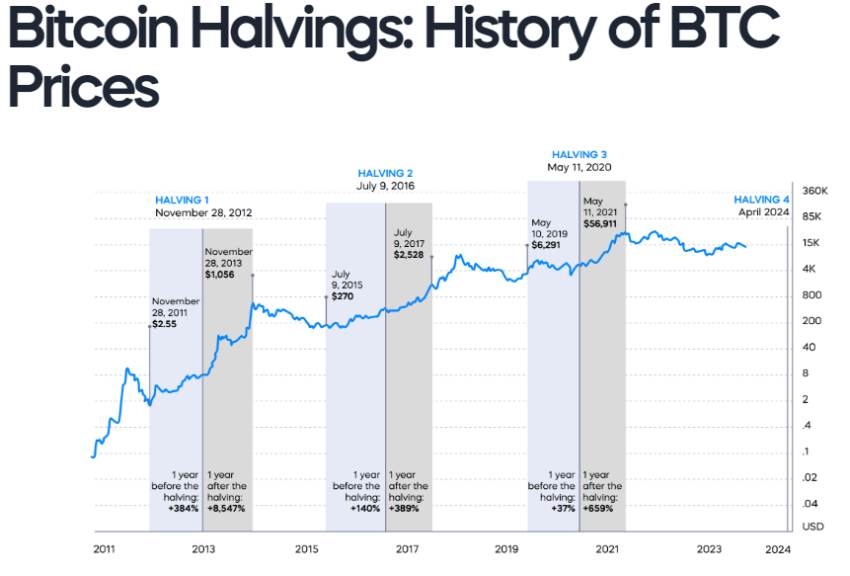ARTICLE AD BOX
The countdown to Bitcoin’s fourth mining-reward halving has financial experts and enthusiasts on the edge of their seats.
With the event set to cut BTC’s per-block emission to just over 3 BTC, the crypto community watches, eagerly anticipating a repeat of past post-halving rallies. Goldman Sachs, however, urges caution, highlighting the variability of Bitcoin’s past and the unpredictable macroeconomic conditions.
2024 Bitcoin Halving: This Time Is Different
Goldman Sachs’ advisory, circulated on April 12, hints that while historical data shows substantial Bitcoin appreciation following previous halvings, this trend should not be a definitive roadmap for future price movements.
The banking giant emphasizes the psychological effects of the halving on investor sentiment, noting that Bitcoin’s inherent capped supply might stir a bullish outlook. Still, the larger picture is far more complex.
“Caution should be taken against extrapolating the past cycles and the impact of halving, given the respective prevailing macro conditions,” Goldman’s stated.
Read More: Bitcoin Halving History: Everything You Need To Know
With a nod to the evolving cryptocurrency landscape, Goldman Sachs points to the advent of Bitcoin ETFs as a significant factor likely to shape the medium-term price trajectory.
“Whether BTC halving will next week turn out to be a ‘buy the rumour, sell the news event’ is arguably less impactful on BTC’s medium term outlook, as BTC price performance will likely continue to be driven by the said supply-demand dynamic and continued demand for BTC ETFs, which combined with the self-reflexive nature of crypto markets is the primary determinant for spot price action,” the Goldman team stated.
Has Bitcoin’s ETF Approval Already Influenced Market Prices?
While some analysts forecast a price surge potentially hitting new all-time highs, David Mercer, CEO of LMAX Group, remains skeptical. He suggests that the market maturity reached in 2024 diverges sharply from earlier cycles, possibly dampening the halving’s impact.
Mercer is not alone in his cautionary stance. Insights suggest that Bitcoin’s recent price ascent might reflect the much-anticipated halving effect. The cryptocurrency’s performance in the lead-up to the event, including hitting a record high in March and a noticeable uptick since the beginning of the year, has been exceptional.
“The view from the grown-up market is this: 2012, 2016, 2020, the halving preceded a massive bull run, so the evangelist will tell you, 2024 is going to be the same. We think not,” Mercer concluded.
This surge owes much to the enthusiasm surrounding new US spot Bitcoin ETFs and the influx of institutional investment into the sector.
Thomas Perfumo, head of strategy at Kraken, asserts that the dynamic has shifted; where the halvings once sparked new investment, the recent ETF introductions have front-loaded interest and capital flow into Bitcoin.
Such factors contribute to a nuanced view of the halving, framing it as a milestone that may not necessarily herald an immediate investment boom as witnessed in the past.
Read More: What Happened at the Last Bitcoin Halving? Predictions for 2024
 Bitcoin Price Performance Before and After Halving. Source: ProShares
Bitcoin Price Performance Before and After Halving. Source: ProSharesThe event remains a critical analysis point for those invested in the crypto market’s future, underscoring the delicate interplay between historical patterns and the evolving financial ecosystem.
The post Goldman Sachs: Halving History May Not Predict Bitcoin’s Future appeared first on BeInCrypto.
.png)
 7 months ago
3
7 months ago
3








 English (US)
English (US)